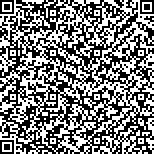| 本文已被:浏览次 下载次 |

码上扫一扫! |
|
|
|
| Spectrum characteristics testing of acoustic propagation in drill-string with periodic thread connections |
|
LIU Yongwang1,2, GUAN Zhichuan2, DU Zhenchuan3, JIN Youhai1, ZHAO Guoshan3, DU Binbin2, LI Zhiyuan2, WANG Qing2
|
|
(1.College of Chemical Engineering in China University of Petroleum, Qingdao 266580, China;2.School of Petroleum Engineering in China University of Petroleum, Qingdao 266580, China;3.Drilling Engineering & Technology Company of SINOPEC Shengli Engineering Company Limited, Dongying 257064, China)
|
| Abstract: |
| A testing equipment to study the transmission and attenuation behavior of acoustic waves in drill-string was designed, and the propagation characteristics of the acoustic waves in a periodic-thread-connection structure were studied. The experimental results were analyzed and compared with that calculated using a transfer matrix method. The results show that there exists a pass-band with smaller attenuation and distortion and a stop-band with bigger attenuation and distortion when acoustic waves propagate in the drill-string with periodic-thread-connections. The pass-band and stop-band appear alternatively in frequency and their difference reduces with the increase of acoustic frequency. When the frequency exceeds a certain value, the pass-band disappears, which means that the acoustic wave can be completely absorbed. The calculated four lowest-frequency pass-bands and stop-bands agree well with the experimental results, but there after their difference is greater for higher frequency. This shows that the theoretical method works well in the calculation of low-frequency pass-band and stop-band distribution, and can be used to analyze the characteristics of acoustic wave propagation in drill-string and to select proper frequency as an acoustic-information carrier in low frequency range. |
| Key words: acoustic wave periodic pipe structure thread connection transfer matrix method frequency spectrum characteristics pass-band |
|
|